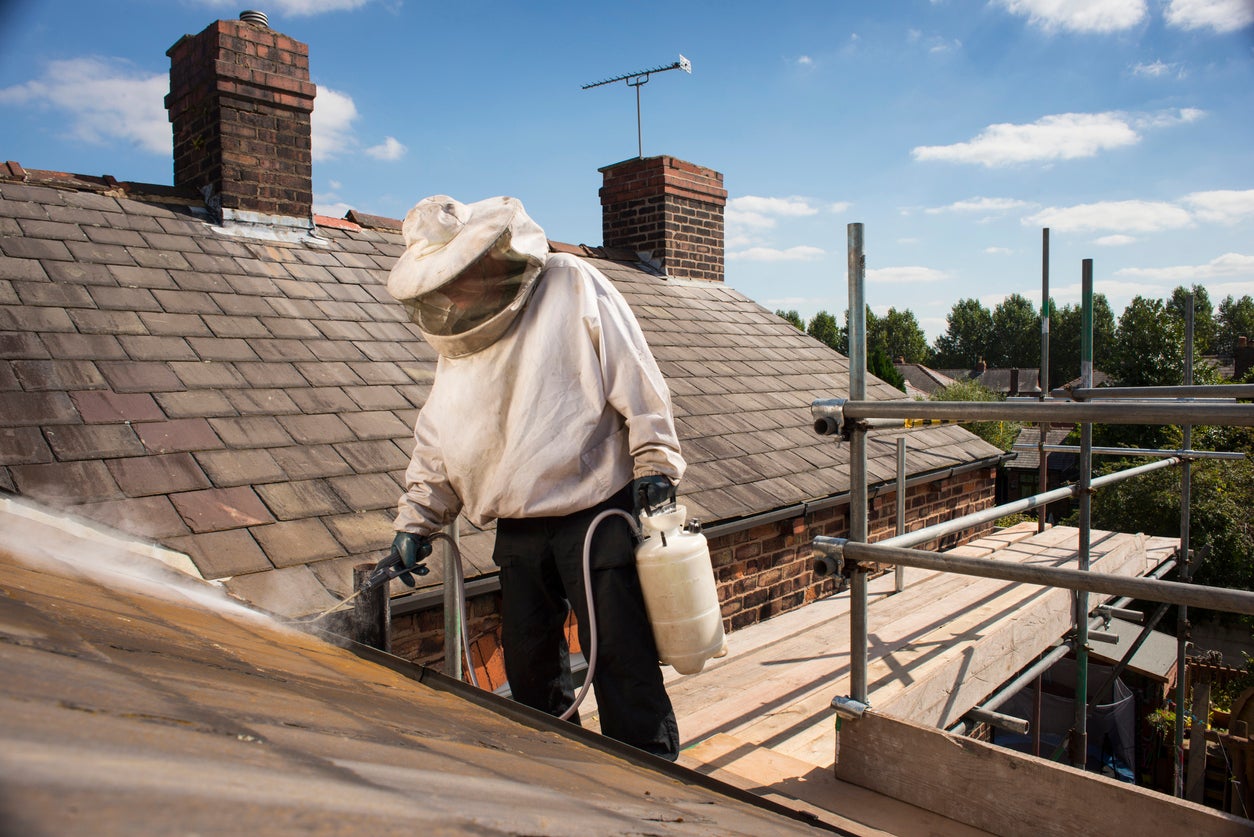

Articles
How To Get Rid Of Wasps In Siding
Modified: February 13, 2024
Learn effective techniques and articles on how to eliminate wasps nesting in your siding and enjoy a wasp-free home.
(Many of the links in this article redirect to a specific reviewed product. Your purchase of these products through affiliate links helps to generate commission for Storables.com, at no extra cost. Learn more)
Introduction
Having wasps infesting your siding can be a nuisance and a cause for concern. These buzzing insects not only create an unwelcome presence for you and your family but can also pose a threat with their painful stings. If your siding has become a favorite nesting spot for wasps, it’s important to address the issue promptly and safely.
In this article, we will explore various methods to get rid of wasps in siding. From identifying the type of wasps you’re dealing with to implementing natural or chemical-based solutions, we’ll provide you with the knowledge and tools you need to effectively eliminate these pests.
Before we delve into the specific techniques, it’s crucial to understand the potential dangers associated with wasps in siding. Unlike bees, wasps have smooth stingers that allow them to sting multiple times, making them more aggressive and potentially more hazardous. For individuals who are allergic or sensitive to wasp stings, the threat can be even greater.
Furthermore, wasps are known to build their nests in sheltered areas, such as the gaps and crevices of siding, eaves, or even under roof overhangs. If left unchecked, their colonies can grow rapidly, increasing the risk of encounters and stings.
Identifying the type of wasps infesting your siding is essential for determining the best course of action. Common types of wasps include yellow jackets, paper wasps, and hornets. Each species has different nesting habits, behavior patterns, and potential risks.
Dealing with wasps requires proper safety precautions and protective gear. It’s crucial to wear thick clothing, gloves, protective eyewear, and a beekeeping veil or hat to avoid being stung. By taking these measures, you can significantly minimize the risk of getting injured during the wasp removal process.
Key Takeaways:
- Identifying the type of wasps infesting your siding is crucial for determining the best approach for elimination. Whether you opt for natural methods or use insecticides, prioritizing safety and following recommended procedures is essential.
- Implementing preventive measures, such as regular inspection, sealing entry points, and maintaining outdoor spaces, can significantly reduce the risk of future wasp infestations in your siding. Professional pest control may be necessary for safe and complete removal.
Read more: How To Get Rid Of Wasps In The Attic
Understanding the Threat of Wasps in Siding
Wasps are not only a nuisance but can also pose a threat when they take up residence in the siding of your home. These tiny flying insects can create havoc and potentially cause harm to you and your family if not addressed promptly.
One of the main concerns with wasps in siding is their ability to sting. Unlike bees, wasps can sting multiple times as their smooth stingers do not detach from their bodies. This makes them aggressive and more likely to attack if they feel threatened.
For individuals who are allergic to wasp stings, the consequences can be severe, ranging from localized pain, swelling, and redness to more serious symptoms like difficulty breathing, dizziness, and even anaphylactic shock. Therefore, it is essential to take precautions and address the presence of wasps in siding as soon as possible.
Another concern with wasps in siding is the potential damage they can cause to the structure of your home. Wasps build their nests by gnawing and chewing through materials like wood, paper, or even insulation. Over time, this can weaken the integrity of the siding, leading to costly repairs or replacements.
Moreover, wasps are territorial insects and will aggressively defend their nests. If you, your children, or pets unknowingly disturb a wasp nest in your siding, it can result in painful stings and a potentially dangerous situation.
Additionally, wasp nests can attract other pests. The residues and remnants of a wasp nest, such as dead insects and leftover larvae, can be an attractive food source for other pests like ants or rodents. This can lead to secondary infestations and a more extensive pest control problem.
Lastly, the presence of wasps in your siding can simply be an annoyance. The constant buzzing, the fear of being stung, and the overall discomfort of knowing these flying insects are near your home can disrupt your peace of mind and enjoyment of your outdoor spaces.
Overall, it’s important to understand the potential threats posed by wasps in siding and take appropriate action to eliminate them. By doing so, you can protect yourself, your family, and your property from the dangers and nuisances associated with these insects.
Identifying the Type of Wasps Infesting Your Siding
When dealing with wasps in your siding, it is crucial to identify the specific type of wasp you are dealing with. Different species of wasps have different nesting habits, behaviors, and potential risks. By correctly identifying the type of wasps infesting your siding, you can determine the most effective approach to eliminating them.
Here are some common types of wasps that you may find in your siding:
- Yellow Jackets: These wasps are commonly mistaken for bees due to their similar appearance. However, yellow jackets have a slender waist, unlike bees. They typically construct their nests in cavities, such as cracks or crevices in siding, attics, or wall voids. Yellow jacket nests can contain thousands of wasps, making them particularly aggressive when threatened.
- Paper Wasps: These wasps are known for constructing open, umbrella-shaped nests out of paper-like materials. They often attach their nests to the eaves of houses, under roof overhangs, or in other sheltered locations, including siding. Paper wasps are generally less aggressive unless their nest is disturbed.
- Hornets: Hornets are larger wasps with unique markings and powerful stingers. They typically build large, football-shaped nests that can be found in trees, bushes, or even the siding of buildings. Hornets, like yellow jackets, can exhibit aggressive behavior when their nest is threatened.
To identify the specific type of wasps in your siding, it is important to observe their physical characteristics, nesting patterns, and behavior. Take note of their size, coloration, and body shape. Notice how they fly, whether they are more aggressive or docile, and where you frequently spot them around your home.
It can also be helpful to inspect the exterior of your home to locate any visible nests. Look for small openings or gaps in your siding where wasps may be entering or exiting. Be cautious when approaching suspected nests and observe from a safe distance to avoid provoking the wasps.
If you are uncertain about the type of wasp infestation you are dealing with or require assistance in identifying the wasps, it is recommended to consult with a professional pest control service. They have the expertise and knowledge to accurately identify the species and recommend the appropriate methods for removal.
By correctly identifying the type of wasps in your siding, you can make informed decisions about the best course of action to eliminate them effectively and efficiently.
Safety Precautions and Protective Gear
When dealing with wasps in siding, safety should be your top priority. Wasps can become aggressive and sting when they feel threatened, so taking proper precautions and using protective gear is essential to avoid injuries and potential allergic reactions. Here are some safety measures you should take:
- Thick Clothing: Wear long sleeves, long pants, and closed-toe shoes to minimize exposed skin. This provides a barrier between you and the wasps, reducing the risk of stings.
- Gloves: Wear thick gloves to protect your hands. Leather or heavy-duty garden gloves are recommended. Ensure that the gloves fit properly and allow for dexterity to handle tools or equipment.
- Protective Eyewear: Wear safety goggles or glasses to shield your eyes from potential stings. This is especially important when dealing with aggressive wasp species like yellow jackets or hornets.
- Head and Face Protection: Consider wearing a beekeeping veil or hat with a mesh screen to protect your face and neck from wasps. This provides an additional layer of defense against any flying wasps near your head.
- Respiratory Protection: In some situations, particularly when using aerosol insecticides or dealing with a large wasp nest, wearing a dust mask or respirator may be necessary to prevent inhaling any airborne irritants or chemicals.
- Working in Teams: If possible, have someone else with you when dealing with wasps in siding. They can provide assistance and help keep an eye out for any unexpected wasp activity.
- Daytime Work: Attempt wasp removal during the early morning or twilight hours when wasps are generally less active and less aggressive. Avoid working at night or during peak activity times to minimize the risk of being stung.
- Know Your Allergies: If you have a known allergy to wasp stings or are unsure of your allergy status, it is advisable to consult with a healthcare professional before attempting wasp removal on your own.
Remember, even with proper protective clothing and gear, it is important to exercise caution and stay alert. Stay calm and avoid sudden movements that may provoke the wasps. If you are uncertain or uncomfortable with the task, it is best to consult with a professional pest control service that has the experience, knowledge, and equipment to handle the situation safely.
By following these safety precautions and using the appropriate protective gear, you can minimize the risk of injury and confidently tackle the removal of wasps in siding.
Natural Methods to Remove Wasps from Siding
If you prefer to use natural methods to remove wasps from siding, there are several effective techniques you can try. These methods are eco-friendly, safe for humans and pets, and can help deter and eliminate the presence of wasps.
- Soap and Water Solution: One of the simplest and most effective natural methods is using a soap and water solution. Mix a few tablespoons of dish soap with water in a spray bottle and thoroughly spray the areas where wasps are nesting or entering. The soap in the solution will suffocate the wasps, ultimately killing them.
- Peppermint Oil: Wasps are repelled by the strong scent of peppermint oil. Mix a few drops of peppermint oil with water in a spray bottle and spray it around your siding, focusing on areas with wasp activity. The strong aroma will discourage the wasps from building nests or entering these treated areas.
- Citrus Spray: Citrus fruits like lemons and oranges contain natural chemicals that repel wasps. Squeeze the juice of several citrus fruits into a spray bottle and dilute it with water. Spray the mixture around your siding to create a deterrent for wasps. Reapply the spray regularly to maintain its effectiveness.
- Hanging Wasp Deterrents: Wasps are territorial insects and tend to avoid areas where other wasps have established their nests. Hang up fake wasp nests or paper bags filled with crumpled paper near your siding to create the illusion of an existing wasp colony. This can deter other wasps from setting up their nests in the same area.
- Sealing Entry Points: Identify any gaps or cracks in your siding where wasps may be entering. Use caulk or sealant to seal these openings, preventing wasps from accessing the interior of your siding. This method helps deter future infestations and reduces the likelihood of wasps expanding their nests.
- Cayenne Pepper Spray: Mix cayenne pepper powder with water and spray it on and around your siding. The spicy nature of cayenne pepper irritates the wasps and discourages them from nesting or returning to the treated areas.
- Planting Wasp-Repelling Herbs: Certain herbs like mint, basil, and thyme emit strong scents that repel wasps. Plant these herbs near your siding or in pots around your outdoor spaces to naturally deter wasps. Not only will they help repel wasps, but they can also enhance the aesthetic appeal of your home’s surroundings.
When implementing natural methods to remove wasps from siding, it’s important to be patient. These methods may take time to effectively deter or eliminate the wasps. It’s also crucial to regularly monitor your siding and reapply treatments as needed.
However, if the wasp infestation persists or becomes overwhelming, it may be necessary to seek professional assistance. Pest control experts have an array of tools and products at their disposal to safely and effectively remove wasps from your siding.
By utilizing these natural methods, you can take proactive steps towards removing wasps from your siding while maintaining a safe and eco-friendly environment.
Seal any cracks or openings in your siding to prevent wasps from building nests. Use a caulking gun to fill in gaps and holes, and consider installing mesh screens over vents and openings.
Read more: How To Get Rid Of Wasps In Eaves
Using Insecticides to Eliminate Wasps in Siding
If you are dealing with a stubborn wasp infestation in your siding and natural methods have not provided the desired results, using insecticides can be an effective solution. Insecticides designed specifically for wasp control can help eradicate the pests and prevent further infestation. Here are some important considerations and steps to follow when using insecticides to eliminate wasps in siding:
- Choose the Right Insecticide: Select an insecticide that is labeled for wasp control and suited for the type of wasps infesting your siding. It’s important to read and carefully follow the instructions on the product label to ensure safe and effective use.
- Safety Precautions: Always wear appropriate protective gear, including gloves, goggles, and a mask, when handling and applying insecticides. Follow safety instructions provided by the manufacturer to minimize risks to yourself, others, and the environment.
- Evening Application: Apply the insecticide in the evening or early morning when wasps are generally less active and less likely to be aggressive. This reduces the chances of being stung during the treatment.
- Target Nests Directly: Locate the wasp nest in your siding and apply the insecticide directly into the nest entrance or openings. It’s best to spray during a time when wasp activity is low to ensure maximum contact with the colony.
- Keep a Safe Distance: Stand at a safe distance from the nest when spraying insecticide to avoid provoking the wasps. Ensure that you have a clear escape route if the wasps become agitated.
- Repeat Application: In some cases, multiple applications of insecticide may be necessary to completely eliminate the wasp colony. Follow the recommended frequency of application as stated on the product label, typically spaced several days apart.
- Remove Nest After Treatment: After the wasps have been eliminated, it’s important to remove the nest from your siding to prevent attracting new wasp colonies or other pests. Wearing protective gear, carefully remove the nest and dispose of it in a sealed bag or container.
- Monitor and Take Preventive Measures: Regularly inspect your siding for any new wasp activity and address any potential entry points or areas that may attract wasps. Implement preventive measures to minimize the chances of future infestations.
When using insecticides, it’s crucial to prioritize safety and strictly adhere to the instructions and guidelines provided by the product manufacturer. If you are uncomfortable or unsure about using insecticides yourself, consider consulting with a professional pest control service that can safely and effectively eliminate wasps from your siding.
Remember that insecticides may have adverse effects on beneficial insects like bees. To minimize harm to these important pollinators, choose insecticides that specifically target wasps and avoid applying them directly to flowering plants or areas frequented by bees.
By using insecticides responsibly and effectively, you can eliminate wasps from your siding and create a safer and more comfortable environment.
Prevention Techniques to Avoid Wasp Infestations in Siding
Preventing wasp infestations in your siding is crucial to maintaining a wasp-free environment around your home. By implementing a few preventive measures, you can minimize the chances of wasps building nests and causing a nuisance. Here are some effective techniques to avoid wasp infestations in siding:
- Inspect and Seal Entry Points: Regularly inspect the exterior of your home, paying close attention to gaps, cracks, or openings in your siding. Seal these entry points using caulk or sealant to prevent wasps from accessing the interior of your siding.
- Keep Your Siding Clean: Maintain cleanliness around your siding by regularly removing debris, such as fallen leaves, sticks, and other organic matter. Wasps are attracted to these materials as they can use them to build their nests.
- Trim Vegetation: Trim bushes, trees, and shrubs near your siding to deter wasps from making their nests in close proximity to your home. By keeping vegetation away from your siding, you reduce the likelihood of wasps using it as a nesting site.
- Limit Food Sources: Keep food and garbage securely sealed and stored away from outdoor areas. Wasps are attracted to sweet foods and scents, so by minimizing these attractants, you reduce the chances of drawing wasps near your siding.
- Install Wasp Traps: Place commercially available wasp traps or DIY traps around your yard to capture and eliminate foraging wasps. Position these traps away from your siding to prevent drawing wasps closer to your home.
- Use Wasp-Repelling Plants: Plant certain varieties of flowers and herbs that naturally repel wasps. Examples include marigolds, geraniums, mint, and basil. These plants emit scents that deter wasps and can act as a deterrent near your siding.
- Keep Outdoor Spaces Tidy: Regularly clean and tidy up your outdoor spaces, including patios, decks, and sidewalks. Remove any food residues or spills that can attract wasps. Encourage family members to clean up after outdoor meals or activities.
- Professional Inspection: Schedule regular inspections with a professional pest control service to assess the condition of your siding and identify any potential wasp activity. Taking proactive measures with a trained expert can help detect early signs of wasp infestations.
By consistently implementing these prevention techniques, you can significantly reduce the risk of wasp infestation in your siding. Incorporating these practices into your regular maintenance routine will contribute to a wasp-free environment, creating a safer and more enjoyable outdoor space for you and your family.
Calling Professional Pest Control for Wasp Removal in Siding
While DIY methods and preventive measures can be effective in controlling and deterring wasp infestations in siding, there are situations where it is best to call in professional pest control experts. Professional assistance ensures a safe and thorough elimination of wasps, particularly when dealing with large or persistent infestations. Here are some reasons why you may need to consider contacting professional pest control for wasp removal in your siding:
- Safety: Wasps can be aggressive and pose a threat when their nests are disturbed. Professional pest control technicians have the necessary training, experience, and protective gear to safely handle and remove wasps from your siding. They understand the behaviors and habits of different wasp species, minimizing the risk of stings or other injuries.
- Knowledge and Expertise: Pest control professionals have in-depth knowledge of various wasp species and their nesting habits. They can accurately identify the specific type of wasps infesting your siding and determine the most effective methods for removal. Their expertise allows for a targeted approach that ensures efficient and long-lasting results.
- Specialized Equipment and Products: Pest control companies have access to specialized equipment and insecticides that are not readily available to the general public. These tools enable them to safely and effectively eliminate wasp colonies, even in hard-to-reach areas of your siding. By using professional-grade products, they can ensure maximum effectiveness and minimize the chances of the infestation recurring.
- Thorough Inspection: Professional pest control technicians will conduct a comprehensive inspection of your siding to locate all existing wasp nests and identify potential entry points. This thorough assessment allows them to develop a customized treatment plan to address the specific needs of your property.
- Guaranteed Results: Many pest control companies offer guarantees on their services. This means that if the wasp infestation persists after treatment, they will return to re-treat the area at no additional cost to you. This guarantee gives you peace of mind, knowing that the experts will ensure the problem is completely resolved.
- Preventive Measures: In addition to eliminating the existing wasp infestation, professional pest control technicians can provide recommendations and implement preventive measures to minimize the chances of future infestations. This may include sealing potential entry points, ensuring proper ventilation, or making recommendations for landscaping and outdoor maintenance.
By calling professional pest control for wasp removal in your siding, you can benefit from their expertise, specialized equipment, and guaranteed results. They will handle the task safely and efficiently, allowing you to regain peace of mind and enjoy your outdoor spaces without the presence of wasps.
When selecting a pest control company, be sure to choose a reputable and licensed provider with experience in dealing specifically with wasp infestations. Request quotes, compare services, and read customer reviews to make an informed decision.
Remember, if you are unsure about handling wasp removal yourself or if you are dealing with a severe infestation, professional assistance is always the best option for a safe and effective resolution.
Conclusion
Dealing with wasps in siding can be a challenging and potentially dangerous task. These buzzing insects not only create a nuisance but can also pose a threat with their painful stings. However, by following the right methods and precautions, you can effectively remove and prevent wasp infestations in your siding.
First and foremost, it is important to understand the risks and potential harm associated with wasps in siding. Identifying the type of wasps infesting your siding is crucial for determining the best approach for elimination. Whether you opt for natural methods or use insecticides, it’s essential to prioritize safety and follow the recommended procedures.
Implementing preventive measures is key to avoid future wasp infestations in your siding. Regular inspection, sealing entry points, and keeping your siding clean are simple yet effective ways to deter wasps from nesting. Additionally, utilizing wasp-repelling plants, installing traps, and maintaining outdoor spaces can further reduce the appeal of your siding to these flying pests.
In some cases, professional pest control might be necessary to ensure the safe and complete removal of wasp colonies from your siding. Pest control experts have the knowledge, expertise, and specialized tools to handle the job efficiently and effectively. They can also provide guidance and implement preventive measures to minimize the chances of future infestations.
Ultimately, by addressing wasp infestations promptly and taking preventative measures, you can create a wasp-free environment and regain the tranquility of your outdoor spaces.
Remember, the safety of yourself and others should always be the top priority when dealing with wasps. Whether you choose to tackle the task yourself or seek professional assistance, it’s essential to follow the appropriate safety precautions and protective measures.
With the information and techniques outlined in this article, you are now equipped to take action against wasps in your siding. By combining knowledge, precautionary measures, and proper removal methods, you can successfully mitigate the presence of wasps and enjoy a more peaceful and secure living environment.
Frequently Asked Questions about How To Get Rid Of Wasps In Siding
Was this page helpful?
At Storables.com, we guarantee accurate and reliable information. Our content, validated by Expert Board Contributors, is crafted following stringent Editorial Policies. We're committed to providing you with well-researched, expert-backed insights for all your informational needs.
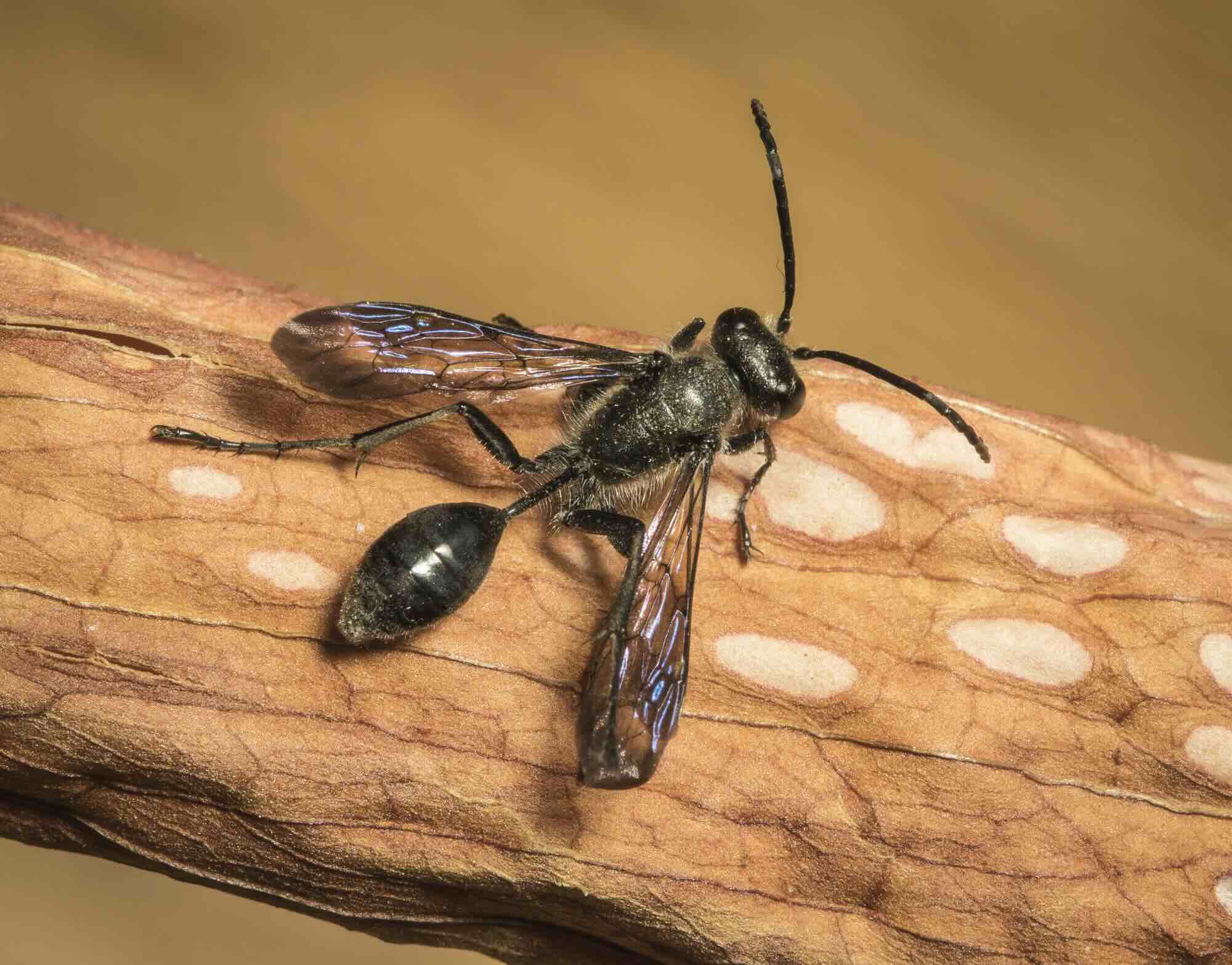
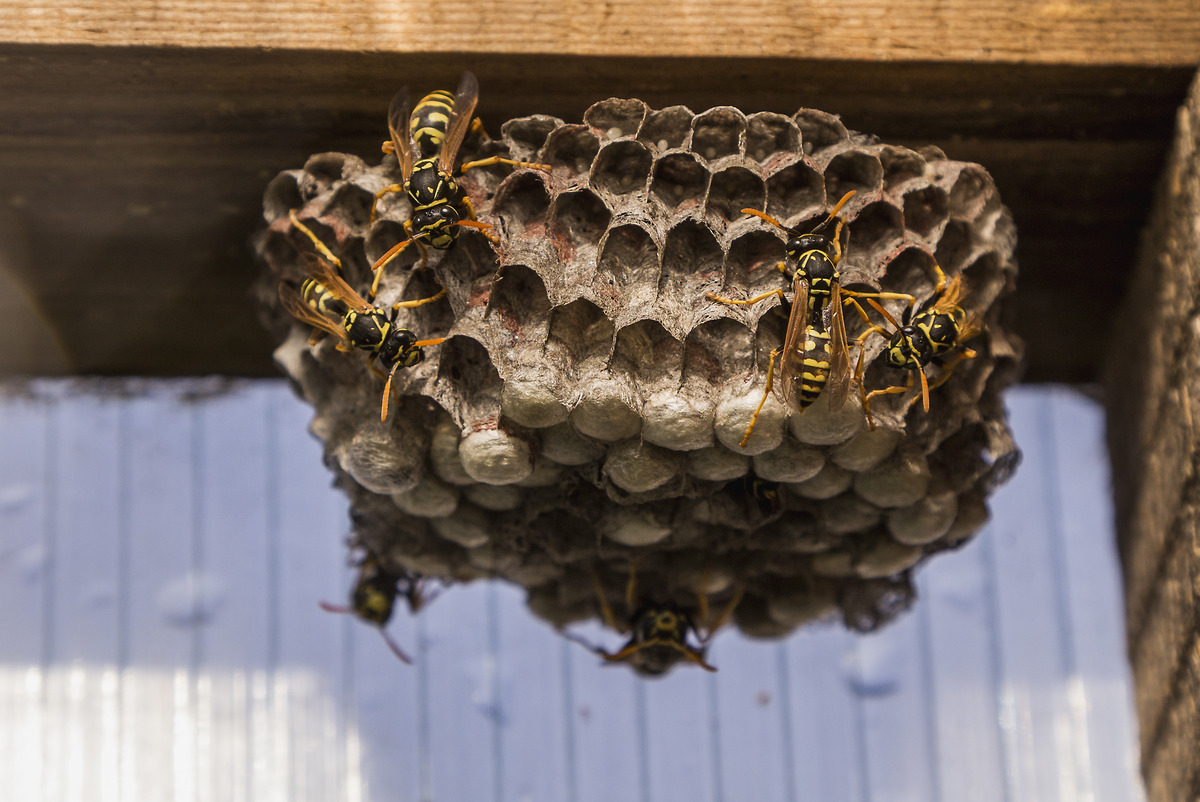
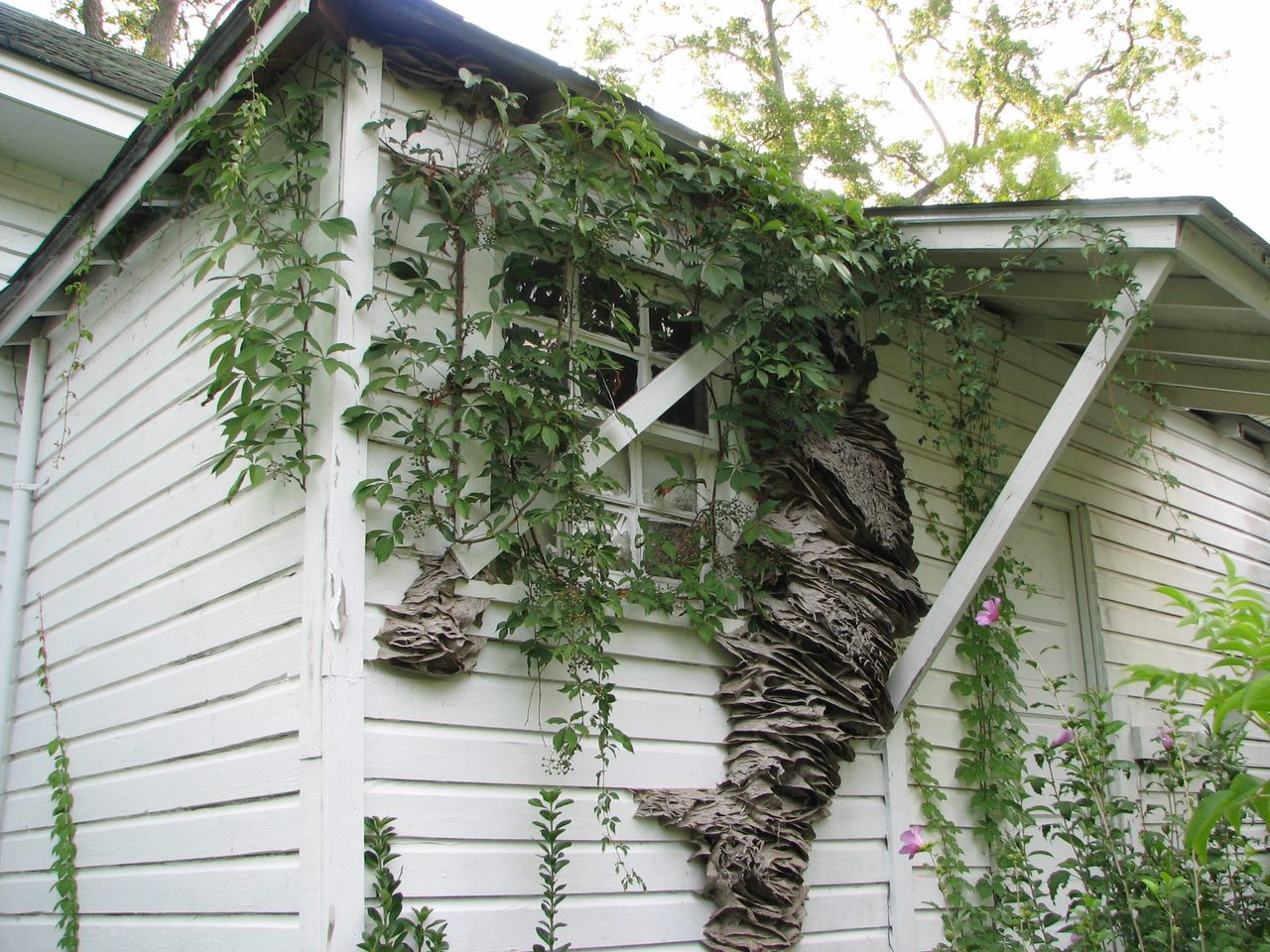
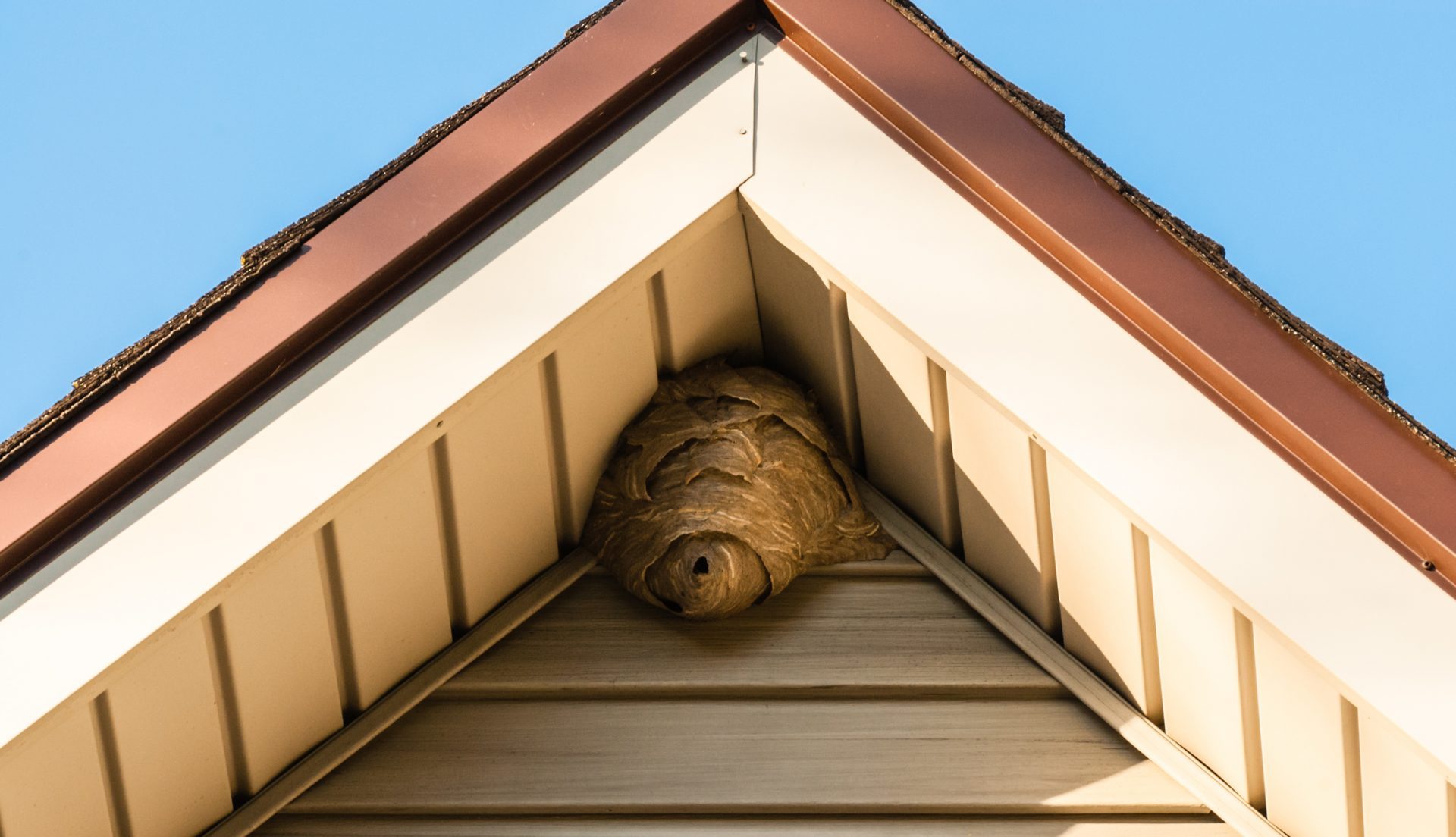
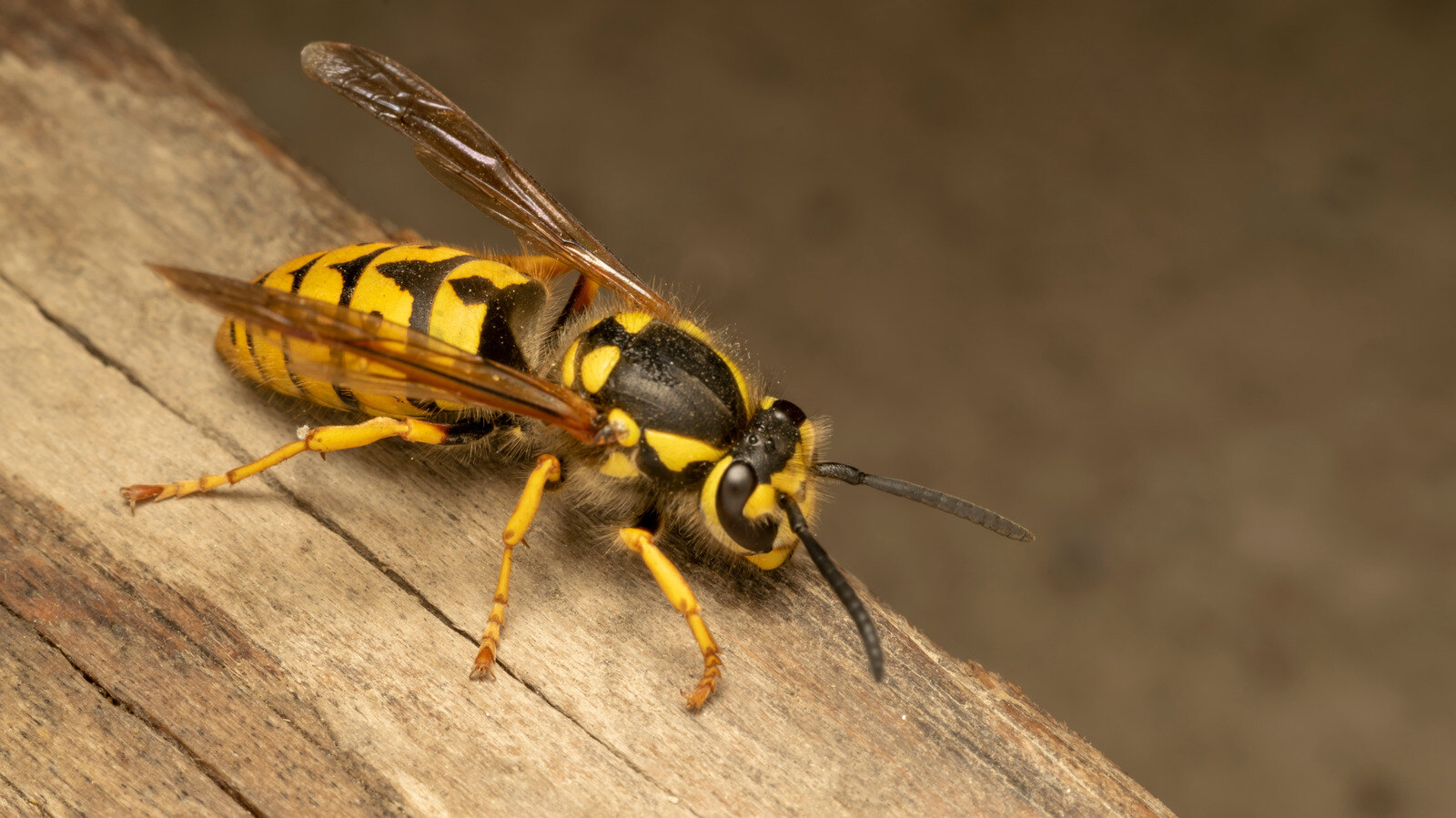
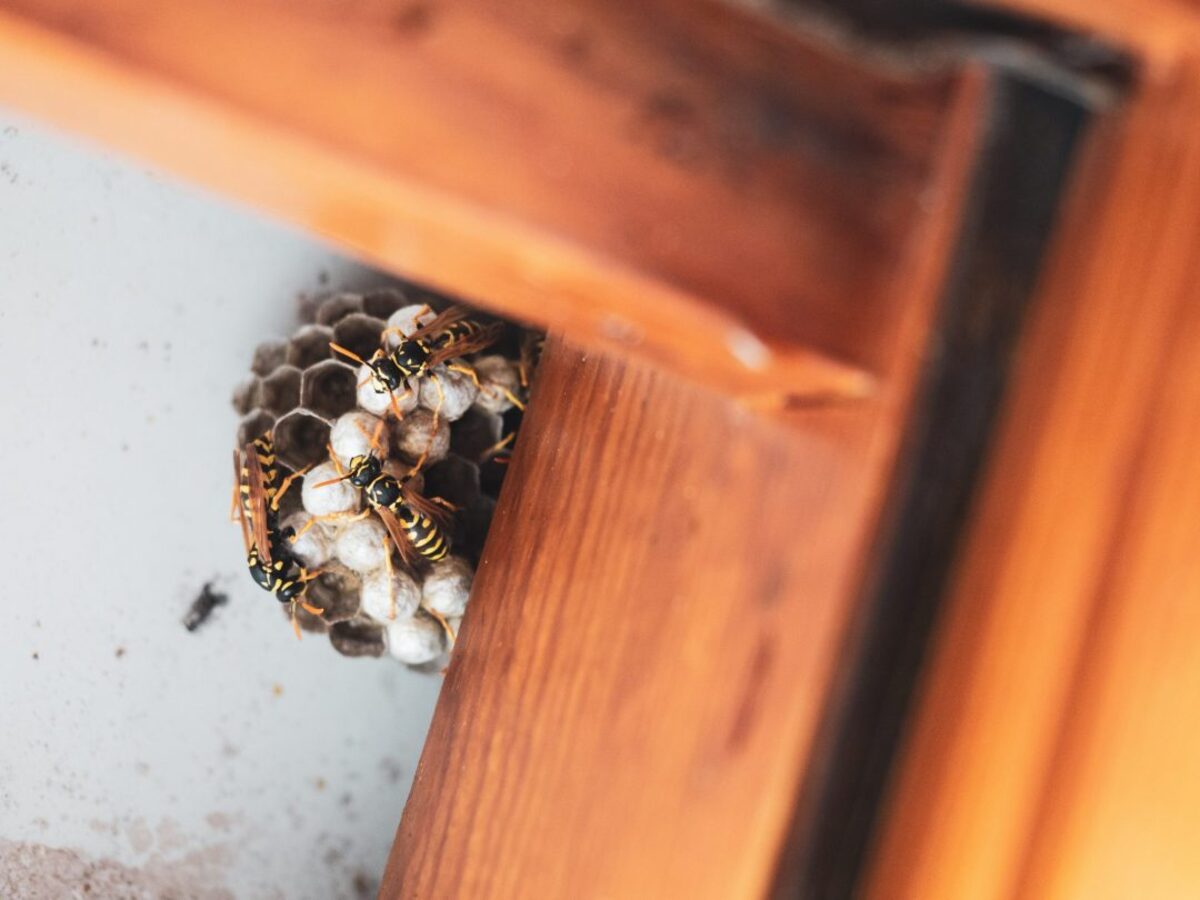

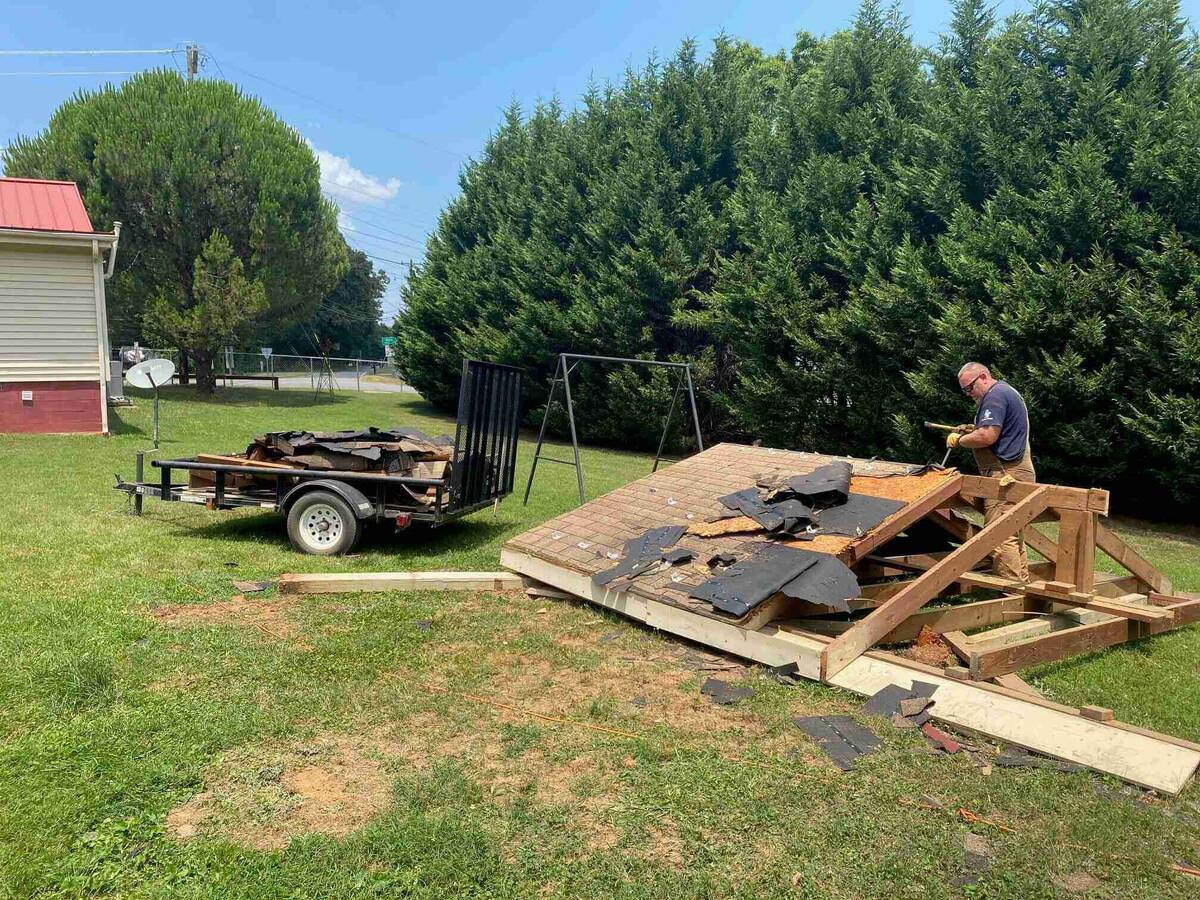



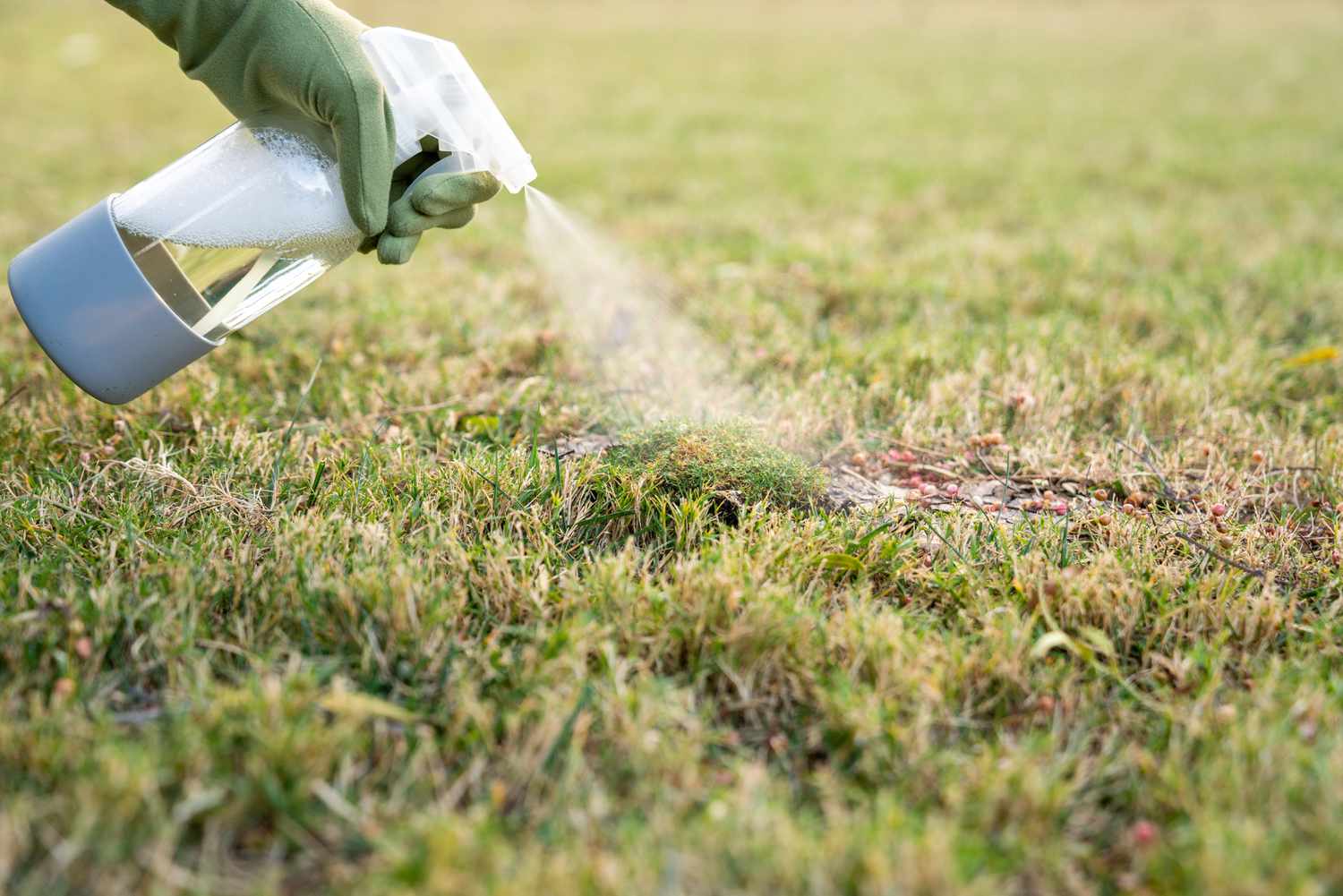

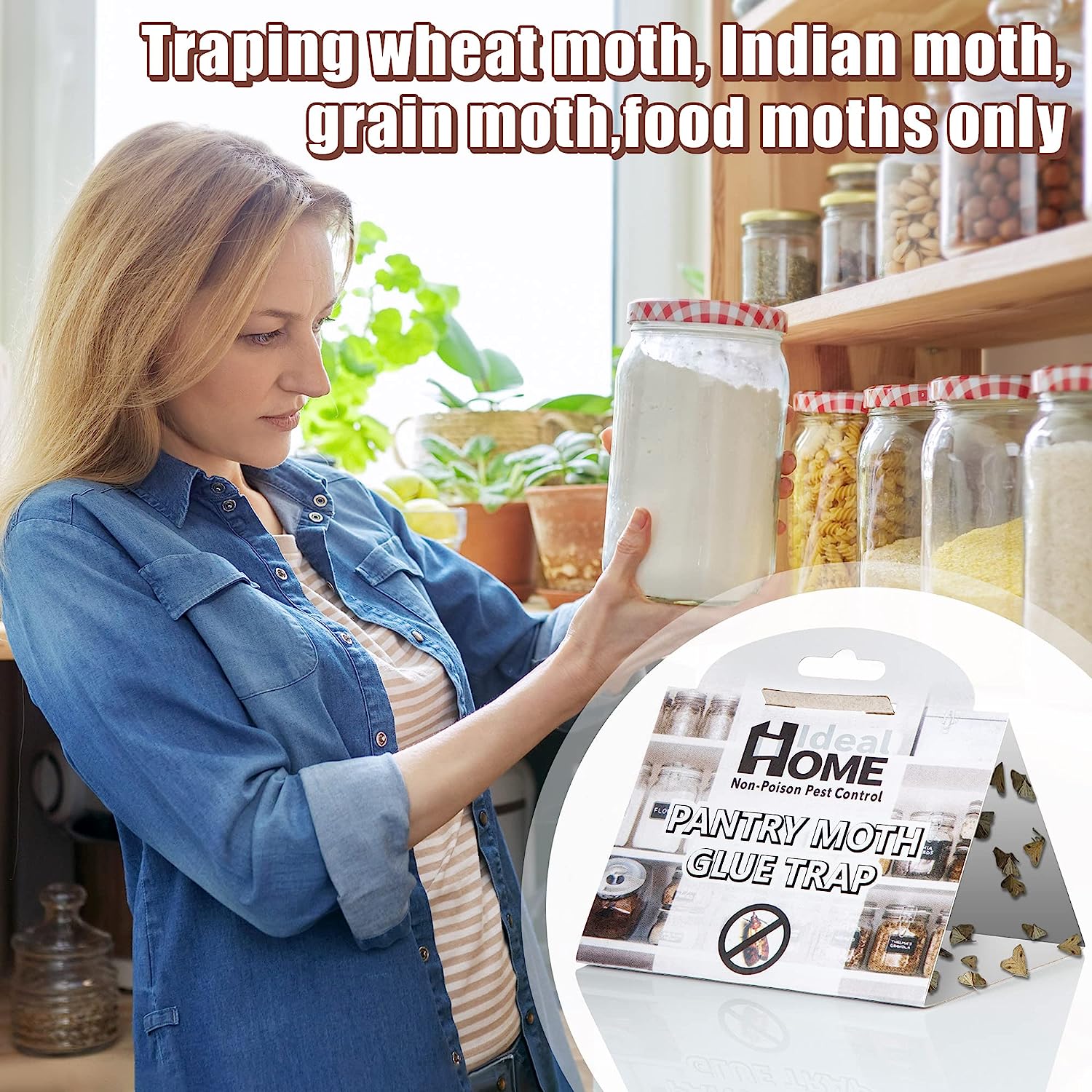

0 thoughts on “How To Get Rid Of Wasps In Siding”